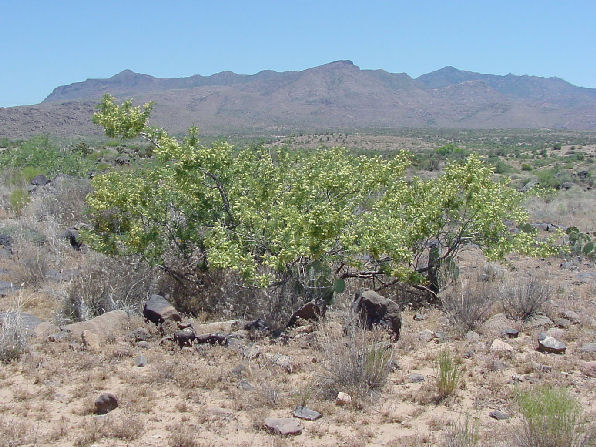Arizona Wild Flowers
Pictures, Photos, Images
Descriptions, Information, Reviews.
Catclaw Acacia, Fabaceae Acacia greggii.
We Are Proud Of Our SafeSurf Rating!
Click On Any Of The Following Links By Amazon.Com
For Books, & Videos About Wildflowers Of Arizona & The Southwest USA. No Obligation!
 |
| Catclaw Acacia, Fabaceae Acacia greggii. Photo Taken June 13, 2003 At Date Creek, Arizona. |
|---|
 |  |
| Cat’s Claw Acacia. | Fabaceae Acacia greggii. |
|---|---|
 |  |
| Bees produce Tons Of honey From Catclaw Blossoms. It Tastes Great! | Why This Plant Is Called Catclaw Or Wait A Minute Bush. |
Catclaw Acacia.
We wish to thank Wikipedia, the free encyclopedia for some of the information on this page. We share images and information with Wikipedia. Acacia greggii is a species of Acacia native to the southwestern United States and northern Mexico, from the extreme south of Utah (where, at 37°10' N it is the northernmost naturally occurring Acacia species anywhere in the world) south through southern Nevada, southeast California, Arizona, New Mexico and western Texas to Baja California, Sinaloa and Nuevo León in Mexico. Its common names include Catclaw Acacia, Catclaw Mesquite, Gregg's Catclaw, Devil's Claw, Paradise Flower, Wait-a-minute Tree, and Wait-a-bit Tree. These names are given because the tree has numerous hooked thorns with the shape and size of a cat's claw, that tend to hook onto passers-by; the hooked person must stop and then, "wait a minute," to remove the thorns carefully to avoid injury or shredded clothing. Catclaw Honey is produced by the honeybee in Arizona. in very large quanities. Catclaw Honey tastes wonderful! George DeLange, the author of this page is a beekeeper, and George can say that not only does the Catclaw Honey taste great, but the thorns of the Catclaw Tree, sure do hurt and make you "Wait A Minute." Catclaw is a thicket forming shrub or small tree that can reach heights of about 30 feet. Cat‘s claw is a perennial with an average life span greater than 100 years. The O’odham Native Americans in Arizona, drink a tea from the roots for both stomach and kidney problems. The Seri and Yaqui People use the wood in their bows.
Quick Notes:
Height: About 6 - 15 feet. Can reach 30 feet.
Flowers: Pale yellow, sometimes cream colored; in a tight elongated, showy clusters, 2 to 3 inches long, fragrant, appearing in spring and early summer. Inflorescences, axillary spikes.
Flowering Time: April to June.
Seed Pod: A 3 to 6 inch long, ½ inch wide, flattened, very twisted legume, brown, maturing in mid to late summer.
Stems/Trunks: An attractive gray shaggy - rough trunk; the stems have small curved thorns.
Leaves: The leaves are alternate, bipinnately compound, 1 to 2 inches long, with 1 to 3 pairs of major leaflets, 4 to 6 pairs of minor leaflets (1/4 inch long), dull green in color.
Found: Southwestern United States and northern Mexico.
Hardiness:
Soil pH requirements:
Sun Exposure:
Elevation: 0 - 6,000 feet.
Habitat: Washes, flats and canyons below 6000', creosote bush scrub, pinyon-juniper woodland, deserts.
Miscellaneous: Flowering Photos Taken At Date Creek, Arizona. June 13, 2003.
|
We Are Proud Of Our SafeSurf Rating!
Click On Any Of The Following Links By Amazon.Com
For Books, & Videos About Wildlife Of Arizona & The Southwest USA. No Obligation!
| © 1966 - Present, Audrey, Eve, & George DeLange |
